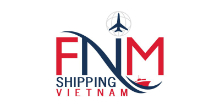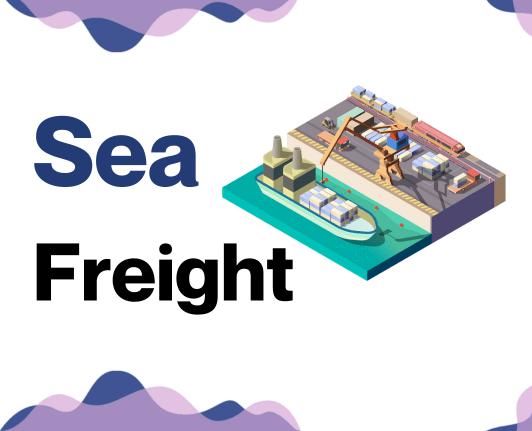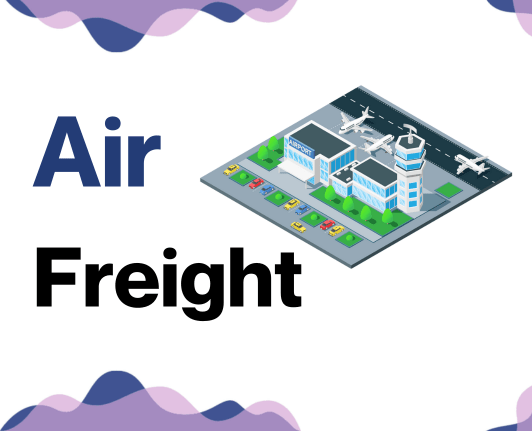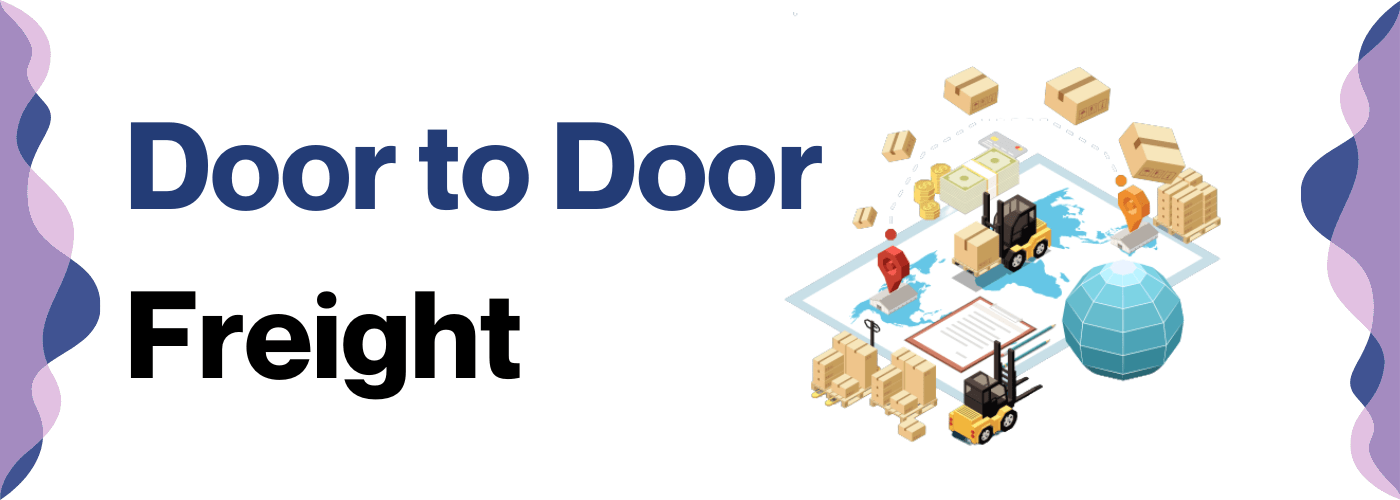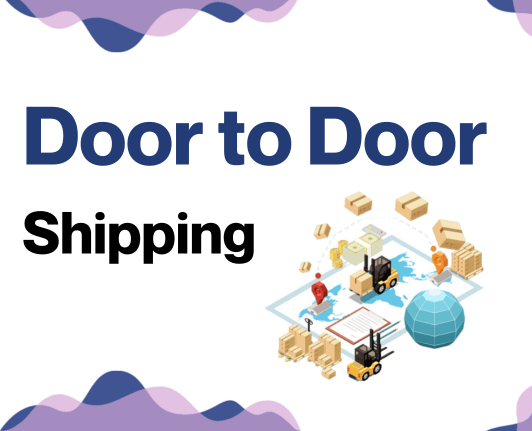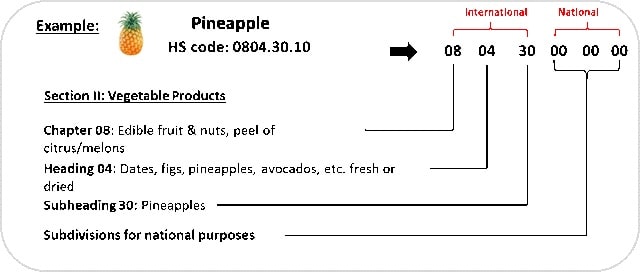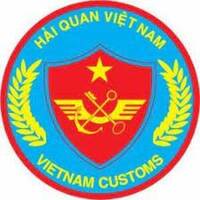Grab a cup of Vietnamese coffee and relax—your shipping issues between Vietnam and Cyprus are about to get easier. Sorting out shipping rates, transit times, and customs rules can be confusing, but this guide is here to help. We’ll walk you through your freight options, explain the customs process, and break down the costs involved. You’ll also find practical tips to make shipping smoother for your business. And if it still feels too complicated, let FNM Vietnam handle it for you! We’re international freight experts, turning shipping challenges into business success.
Which are the different modes of transportation between Vietnam and Cyprus?
Shipping goods from Vietnam to Cyprus is like planning a trip. Do you want the slower, scenic route or the faster, direct one? With the long distance and no shared borders, it’s like choosing between a slow cruise (sea freight) or a quick flight (air freight). Your choice depends on what’s most important—cost, speed, or the environment. The right decision can make your shipping journey smooth or stressful, so choose carefully!
How can FNM Vietnam help?
Struggling with shipping goods from Vietnam to Cyprus? Let FNM Vietnam take care of it for you. We handle all your shipping and customs needs, so you can save time and avoid the hassle. Looking for a stress-free shipment? Get a free quote in under 24 hours. Have questions? Our experts are just a call away, ready to help!
FNM Vietnam Tip: Sea freight might be the best solution for you if:
- You're moving big loads or large items. Sea freight offers roomy, cost-effective solutions.
- Your shipment isn't time-critical. Ocean routes take longer but are often more reliable.
- Your supply chain links major ports, tapping into a broad network of sea lanes.
Sea freight between Vietnam and Cyprus
Bridging the waters between Vietnam and Cyprus, ocean shipping stands as a crucial artery of trade. This bustling route connects key industrial hubs through vibrant cargo ports like Port of Ho Chi Minh in Vietnam and Limassol Port in Cyprus. Carrying everything from electronics to textiles, these ships offer a cost-effective path for high-volume goods. However, one must remain patient, as it promises savings over speed.
But don't be misled; ocean shipping often seems as complicated as charting a course under a cloudy night sky. Businesses often stumble over unexpected hurdles - from hidden costs to intricate legal formalities. Feel like you're caught in a sea-storm of shipping challenges? Fear not; there's a lighthouse to guide you. Shahrazad IA will break down these complexities into stepping-stones, showing you practical solutions to common problems and efficiency-boosting practices. So, prepare to set sail and conquer the seas of international trade with newfound confidence and knowledge.
Up next: untangling the knots of ocean shipping between Vietnam and Cyprus.
Main shipping ports in Vietnam
Port of Hai Phong
Location and Volume: Located on the coast of the Gulf of Tonkin, the Port of Hai Phong is the third-largest city in Vietnam and has a significant economic, cultural, commercial, and educational hub. The port specializes in container handling with a capacity of 5.69 million TEUs, making it an essential element in Vietnam's trade ecosystem.
Key Trading Partners and Strategic Importance: Key trading partners include China, Japan, and the United States, making it especially important for businesses seeking to connect with these markets.
Context for Businesses: If you're planning to ship goods to the East Asian markets, Hai Phong might be the right fit for you, given its capacity and established trading relationships.
Port of Ho Chi Minh City
Location and Volume: As the most populous city in Vietnam, Ho Chi Minh City's port sits on the Saigon River, contributing to its title as the largest maritime hub in the country. The port accommodates over 2.1 million TEUs . Worth of cargoes annually.
Key Trading Partners and Strategic Importance: The port primarily trades with the United States, Japan, and China. Its location makes it a crucial hub connecting inland shipping routes and serving as the gateway to the Mekong Delta region.
Context for Businesses: If your company focuses on inland distribution or aims to penetrate the markets in the south of Vietnam, this port could serve as your vital logistical centre.
Port of Cai Mep International Terminal
Location and Volume: Situated around 50 km southeast from Ho Chi Minh City, Port of Cai Mep International Terminal can handle whopping 2.1 million TEUs, making it one of the significant entry points in Vietnam.
Key Trading Partners and Strategic Importance: The port serves large-scale shipping line operators such as Maersk Group, MSC, and CMA CGM. It has become a primary shipping hub for US-Asia trade because of its extremely deep channel depth that allows it to accommodate even ultra-large container vessels.
Context for Businesses: For operations with large-scale shipping requirements, Cai Mep International Terminal is ideal due to its capacity to handle big vessels and facilitate large volume trades.
Port of Da Nang
Location and Volume: The centrally located Port of Da Nang is another critical port in Vietnam's logistics network. Each year, it handles around 7 million tons of cargo.
Key Trading Partners and Strategic Importance: Major trading partners include China, the US, and Japan. As the largest port in central Vietnam, Da Nang serves as a strategic hub for the central and highland markets.
Context for Businesses: If you aim to penetrate the central and highland markets of Vietnam, you should consider the Port of Da Nang to handle your freight.
Port of Qui Nhon
Location and Volume: Qui Nhon Port, located on Qui Nhon Bay in the South Central Coast of Vietnam, is well situated to handle over 8 million tons of cargo annually.
Key Trading Partners and Strategic Importance: Its major trading partners are the United States, Japan, and China. This port's strategic importance lies in its access to critical maritime routes and its role as a critical link in the trans-Pacific and intra-Asia container trading lanes.
Context for Businesses: If your business involves the transportation of grains or other similar goods by sea, Qui Nhon Port might be a suitable logistical choice, considering its excellent grain handling facilities.
Port of Vung Tau
Location and Volume: The Port of Vung Tau, located in southern Vietnam, is the country's premier deep-water port and handles around 38 million tons of cargo each year.
Key Trading Partners and Strategic Importance: It primarily serves as a logistics link for trades between Vietnam and nations in the ASEAN region, along with South Asia and the Middle East. Its deep-water status allows the port to serve larger vessels that other Vietnamese ports cannot handle.
Context for Businesses: If your company's operations involve large vessels, Vung Tau could be the best fit, given its deep-water capabilities and strategically advantageous position to connect with ASEAN countries, South Asia, and the Middle East.
Main shipping ports in Cyprus
Limassol Port:
Location and Volume: Situated in the southern coast of Cyprus, the Limassol Port is pivotal for East Mediterranean trade and is the largest port in Cyprus, catering to the needs of both passenger and freight transport. According to latest statistics, the port handles more than 300,000 TEUs annually.
Key Trading Partners and Strategic Importance: European countries like Germany, Spain, and the UK are among the port's primary trading partners, although connections extend globally, making it a strategic hub for maritime trade. The presence of a specialized oil storage facility further adds value.
Context for Businesses: For businesses seeking a reputable port for the transportation of goods around the Mediterranean region and beyond, Limassol port can be an excellent choice. Known for its efficient and comprehensive services, its ability to handle a high-volume, diversified range of cargo could be a key attribute.
Larnaca Port:
Location and Volume: Larnaca Port, positioned on the south-eastern edge of Cyprus, is one of Cyprus's main cargo ports where both passenger and freight services operate. Although smaller than Limassol, this port still handles substantial shipping volumes—especially of petroleum and petroleum products.
Key Trading Partners and Strategic Importance: Larnaca Port has connections across the Mediterranean, the Middle East, and even as far as Asia. It is strategically important due to its easy access to Middle Eastern markets and its prowess in handling delicate cargo such as petroleum products.
Context for Businesses: If your business involves the shipment of delicate or specific cargo, or targeting Middle Eastern and Asian markets, Larnaca Port may present suited capabilities and strategic connectivity. Its expertise in petroleum product handling further underscores its value.
Should I choose FCL or LCL when shipping between Vietnam and Cyprus?
Weighing whether to ship by consolidation or full container load between Vietnam and Cyprus? It's a pivotal decision for your business, affecting not only cost and delivery time but the entire success of your shipment. In the sea freight realm, these two options - known as FCL (Full Container Load) and LCL (Less Than Container Load or Consolidation) can completely alter your shipping experience. This guide is here to demystify the differences and empower you to make a choice finely tuned to your precise shipping needs. Let's dive in!
LCL: Less than Container Load
Definition: Less than Container Load (LCL) shipment is a type of sea freight for smaller goods that wouldn't fill up a whole container. By consolidating your cargo with others, costs are shared and efficiency improved.
When to Use: This model is preferred for shipments with volumes less than 13-15 CBM. If you don't have enough goods to justify a Full Container Load (FCL), LCL freight provides flexibility and cost-effectiveness.
Example: For instance, if your business specializes in crafting Cypriot ceramics and you receive a medium-sized order from Vietnam, opting for LCL shipping helps you to manage costs and execute prompt delivery without waiting to fill an entire container.
Cost Implications: Using LCL shipment can lead to significant savings as you only pay for the container space your goods occupy. However, it involves more handling and could mean higher risk of damage due to moving and repacking. Therefore, it's essential to assess your merchandise and its handling requirements before choosing LCL freight.
FCL: Full Container Load
Definition: FCL, or Full Container Load shipping, involves renting an entire container. This could be a 20'ft or 40'ft container depending on your cargo's size.
When to Use: FCL shipping is usually the more cost-effective choice for high volume shipments. If you have more than 13/14/15 CBM of cargo, you may opt for FCL shipping. On top of being budget-friendly for large volumes, it also offers the safety advantage because the container is sealed at origin and remains unopened until it reaches the destination.
Example: Suppose a Vietnamese manufacturer has a bulk order of 1000 shoes, which amounts to 15 CBM. In this case, opting for an FCL will not only be cheaper but also safer as the entire container will be dedicated to this one shipment.
Cost Implications: The FCL shipping quote typically includes a flat rate for the rented container regardless of whether it's fully loaded or not. Keep in mind; the cost can be lesser when comparing it with the per CBM price for LCL. Remember, as volume increases, the per-unit shipping cost decreases. So, in the long run, FCL containers prove more economical for larger shipments.
Say goodbye to shipping headaches!
Look no further than FNM Vietnam, your reliable freight forwarder! We uncomplicate cargo shipping for businesses, leaving them free to focus on what they do best. Our ocean freight experts consider factors such as freight volume, urgency, budget, and port accessibility to determine if consolidation or a full container is the right choice – every time. Elevate your business logistics with us! Reach out now for a free freight estimation to ship between Vietnam and Cyprus.
How long does sea freight take between Vietnam and Cyprus?
Typically, sea freight transit time between Vietnam and Cyprus averages around 25 to 35 days,. But remember, these times can change depending on many factors such as the specific ports of loading and unloading, the weight, and nature of the goods you're shipping. For a more accurate and tailored quote to your specific shipping needs, it would be best to get in touch with professional freight forwarders like FNM Vietnam.
| Port in Vietnam | Port in Cyprus | Average Transit Time |
| Ho Chi Minh (Cat Lai) | Limassol | 41 |
| Hai Phong | Limassol | 40 |
| Da Nang | Limassol | 45 |
| Cai Mep | Limassol | 35 |
Please note that Cyprus only has one major sea port for commercial freight, which is Limassol.
How much does it cost to ship a container between Vietnam and Cyprus?
Calculating the precise shipping cost for container transport from Vietnam to Cyprus can be tricky, with ocean freight rates ranging widely per CBM. This variance stems from numerous factors like the Point of Loading, Point of Destination, the carrier chosen, the nature of your goods, even monthly market fluctuations. However, worry not! Our skilled team of shipping specialists meticulously evaluate these elements and quote on a case-by-case basis, ensuring you get the best rates tailored to your specific needs. Rest assured, we're here to help sail your business smoothly through the complexities of international shipping.
Special transportation services
Out of Gauge (OOG) Container
Definition: An OOG container is a specialized shipping option designed to handle out of gauge cargo, or that which exceeds standard shipping dimensions.
Suitable for: It's best suited for bulky machinery, industrial equipment, or large structures.
Examples: Large manufacturing machines, wind turbine blades, construction vehicles.
Why it might be the best choice for you: It provides the flexibility you need for cargo that doesn't conform to standard sizes, and ensures safe transportation due to its structural integrity.
Break Bulk
Definition: Break bulk is the process of breaking down larger quantities of items into smaller, separate units for shipping. This type of shipment doesn't use a container.
Suitable for: It's best for items with irregular shapes or dimensions, and for loose cargo load that needs to individually be loaded or unloaded.
Examples: Steel slabs, timber, or industrial equipment with unique dimensions.
Why it might be the best choice for you: Applications are nearly limitless, making it particularly useful for complex shipping requirements, which can be tailored according to your needs.
Dry Bulk
Definition: Dry bulk cruising refers to the shipping of unpackaged raw materials in large quantities.
Suitable for: It's designed for commodities that are poured directly into a ship’s hold.
Examples: Grain, coal, or iron ore.
Why it might be the best choice for you: If you're shipping raw materials on a large scale, this method offers cost-efficiency and simplification of the loading and unloading process.
Roll-on/Roll-off (Ro-Ro)
Definition: Ro-Ro vessels are ships designed to carry wheeled cargo, such as cars, trucks, or trailers. Cargo rolls on at the origin and rolls off at the destination.
Suitable for: Any wheeled cargo, from cars to heavy vehicles and machinery.
Examples: Cars, trucks, buses, construction machinery.
Why it might be the best choice for you: It allows for easier handling of cargo and reduces potential damage, facilitating your logistics in the process.
Reefer Containers
Definition: Reefer containers are temperature-controlled cargo shipping containers that provide refrigeration for the transportation of perishable goods.
Suitable for: Used extensively for foods, pharmaceuticals, or other organic materials that require specific temperatures.
Examples: Fresh produce, dairy products, frozen food, or temperature-sensitive medical supplies.
Why it might be the best choice for you: It offers precise temperature control necessary for certain goods, ensuring freshness and integrity upon arrival.
To explore these options and receive a customized solution for your shipping needs between Vietnam and Cyprus, we invite you to contact FNM Vietnam. Our dedicated team is committed to providing you with a free shipping quote in less than 24 hours.
FNM Vietnam Tip: Air freight might be the best solution for you if:
- You're on a tight schedule. Air freight delivers speed unmatched by other modes.
- Your cargo is under 2 CBM, a good fit for air's smaller capacity.
- Your destination is off the usual routes, making air's global network a key asset.
Air freight between Vietnam and Cyprus
Air freight between Vietnam and Cyprus - it's like getting your online order delivered overnight! Fast, reliable, and perfect for your smaller, yet high-value items. Handcrafted Vietnamese furniture or precious silk garments can reach Cyprus in a twinkle, safe and sound. Ideal for businesses where time is money, and quality simply can't compromise.
Be warned though, this fast lane in the sky has seen many shippers tumble! Missteps abound, like underestimating the true cost by miscalculating the weight of the package, or overlooking tried-and-tested practices that can save them a pretty penny. In these pages, we'll illuminate these shadows in your journey, ensuring both your goods and your wallet land smoothly.
Air Cargo vs Express Air Freight: How should I ship?
If you're in a tug of war choosing between air cargo and express air freight for your Vietnam-Cyprus shipping, you're not alone. Here's the deal: air cargo sends your goods on shared airline space, while express air does the courier bit with a dedicated plane—pretty much the VIP treatment for your shipment. Now that's clear, let's dive into what suits your business best and simplifies your international logistics journey.
Should I choose Air Cargo between Vietnam and Cyprus?
Embracing air cargo between Vietnam and Cyprus could be an extremely cost-effective and reliable option for your shipping needs, especially once your cargo surpasses the 100/150 kg (220/330 lbs) mark. Renowned international airlines like Vietnam Airlines and Cyprus Airways provide airfreight services that command trust worldwide. However, be aware that transit times may be longer due to the fixed flight schedules. As you map your shipping strategy, always consider these factors to make an informed decision that aligns with your budgetary constraints. In the grand scheme of things, air cargo is often the key to unlocking efficiency in freight forwarding.
Should I choose Express Air Freight between Vietnam and Cyprus?
As a specialized service, express air freight utilises dedicated cargo planes without passengers. This option, facilitated by established international courier firms such as FedEx, UPS, or DHL, is ideal for your shipments that are under 1 CBM or range between 100 to 150 kg (220 to 330 lbs) of cargo. Beyond speed and global reach, express services provide end-to-end visibility, ensuring you can track your shipment every step of its journey from Vietnam to Cyprus. So, if time is a major factor for your business, express air freight could be your go-to choice.
Main international airports in Vietnam
Tan Son Nhat International Airport
Cargo Volume: Over 400,000 Metric Tons annually
Key Trading Partners: Southeast Asia, Europe, USA
Strategic Importance: Being Vietnam's largest airport and located in Ho Chi Minh City, the economic hub of the country, makes this an ideal entry and exit point for goods in southern Vietnam.
Notable Features: In addition to dedicated freight airlines, Tan Son Nhat houses the international cargo terminal, providing comprehensive cargo handling services tailored to varied needs.
For Your Business: Easy access to southern industrial areas and a substantial annual cargo capacity makes it a suitable choice if your target market includes the dynamic regions of southern Vietnam.
Noi Bai International Airport
Cargo Volume: Approximately 700,000 Metric Tons annually
Key Trading Partners: East Asia, Europe, USA
Strategic Importance: As the second largest airport in Vietnam, located in the capital Hanoi, Noi Bai offers key access to the northern areas of Vietnam.
Notable Features: With a focus on cargo services, this airport offers dedicated cargo terminals and warehouses.
For Your Business: If your supply chain includes Northern Vietnam or the Capital city, consider Noi Bai as a robust, well-equipped entry point for your goods.
Da Nang International Airport
Cargo Volume: Around 15,000 Metric Tons annually
Key Trading Partners: Japan, Singapore, China
Strategic Importance: It is the third international airport in the country, located centrally.
Notable Features: It caters mainly to smaller cargo volumes and includes state-of-the-art modern cargo handling services.
For Your Business: If your operation is smaller in scale or the Central Vietnam, including the thriving city of Da Nang, is your target market, this airport might be the best entry or exit point.
Cần Thơ International Airport
Cargo Volume: Approximately 2,500 Metric Tons annually
Key Trading Partners: Southeast Asia, Domestic Operations
Strategic Importance: As the sole international airport in the Mekong Delta, Cần Thơ International Airport serves as a crucial gateway to the fertile Mekong Delta region.
Notable Features: It provides the connectivity needed for the Mekong Delta's agricultural produce to reach international markets directly, bypassing the need to go through Ho Chi Minh City.
For Your Business: Tailor-made for produce, heavy perishables and lesser volume requirements, this airport is ideal if your business is in the farming sector.
Cam Ranh International Airport
Cargo Volume: Around 1,000 Metric Tons annually
Key Trading Partners: Central Asia, East Asia
Strategic Importance: This airport serves as the main airport for the province of Khanh Hoa, offering ease of access to domestic and some international markets.
Notable Features: Although primarily a passenger airport, they offer cargo services, primarily for smaller operations.
For Your Business: If your business deals with smaller volumes and targets markets in Central and East Asia, Cam Ranh's cargo services might offer a convenient shipping solution.
Main international airports in Cyprus
Larnaca International Airport
Cargo Volume: Annually manages over 38,000 tons of cargo.
Key Trading Partners: Major trade partners include Greece, United Kingdom, Israel, and several other European countries.
Strategic Importance: This airport is the largest in Cyprus, it's situated strategically near major shipping routes, and offers a comprehensive cargo-handling infrastructure.
Notable Features: It operates on a 24/7 basis and offers services such as ground handling, air bench, and a dedicated cargo terminal.
For Your Business: With its round-the-clock operations and modern cargo-handling facilities, the Larnaca International Airport can efficiently manage your shipping needs, particularly if your company trades largely with Europe.
Paphos International Airport
Cargo Volume: Not as high as Larnaca, it caters to a specific niche of cargo flights.
Key Trading Partners: Major partners are Europe-focused, with the United Kingdom, Greece, and Russia at the top.
Strategic Importance: Located near popular tourist destinations, it offers a unique opportunity for trading in hospitality and tourism-related goods.
Notable Features: It has one passenger terminal, and it also provides handling services for cargo.
For Your Business: If your company is in the hospitality or tourism sector, or targets tourists as customers, then capitalizing on the cargo services at Paphos International Airport could provide unique advantages.
How long does air freight take between Vietnam and Cyprus?
Typically, shipping between Vietnam and Cyprus by air freight takes an average of 5-8 days. Bear in mind, this is only an average; actual transit time can vary greatly depending on numerous factors. This includes the specific airports involved, the weight of your shipment, and even the nature of the goods you're shipping. For precise times tailored to your unique circumstances, it's advised that you consult with a seasoned freight forwarder like FNM Vietnam.
How much does it cost to ship a parcel between Vietnam and Cyprus with air freight?
Estimating a wide average, the cost to ship an air freight parcel between Vietnam and Cyprus could range from $2.5 to $10 per kg. However, it's essential to understand this is a broad approximation. Actual costs may vary due to factors like distance to and from airports, parcel dimensions, weight, and the nature of goods. Our knowledgeable team is dedicated to working with you, providing the best and most accurate rates tailored uniquely to your shipping needs. Each quotation is case-specific, making sure you get the fairest deal. For clarity on your specific pricing situation, contact us, and you'll receive a free, accurate quote in less than 24 hours.
What is the difference between volumetric and gross weight?
Gross weight refers to the overall weight of a parcel, including its packaging, while volumetric weight is a calculation that reflects the density of a package. Essentially, it is the weight of the space a package occupies.
To calculate the volumetric weight in air freight, a standard industry formula is used: length (in cm) x width (in cm) x height (in cm) / 6000 equals the volumetric weight in kg. On the other hand, Express Air Freight uses a slightly different denominator: length x width x height / 5000.
Let’s say you’re shipping a box with dimensions of 40cm x 30cm x 20cm, and the gross weight is 7 kg. The equation would be: 40 x 30 x 20 / 6000 = 4 kg (that's about 8.8 lbs). Comparatively, for Express Air Freight, the formula becomes 40 x 30 x 20 / 5000 = 4.8 kg (approximately 10.6 lbs).
These measurements matter because freight charges are determined by the greater value between the gross and volumetric weight. This ensures carriers can charge fairly for their services, whether they're transporting a small, heavy item or a large, lightweight one.
FNM Vietnam Tip: Door to Door might be the best solution for you if:
- You seek hassle-free shipping. Door-to-door manages the entire process for you.
- You like one go-to contact. A dedicated agent oversees your door-to-door shipment.
- You aim to limit cargo handling. Fewer transitions mean less risk of damage or loss.
Door to door between Vietnam and Cyprus
When shipping goods internationally, 'Door to Door' service takes the weight off your shoulders, handling transport from your Vietnamese location right to your destination in Cyprus. Why juggle multiple contacts when you can have one dedicated provider? From time-efficiency to simplified customs clearances - this method really shines. Ready to unpack all that door-to-door has to offer? Let's dive in!
Overview – Door to Door
Shipment between Vietnam and Cyprus feeling like a puzzle? Ease your stress with door-to-door shipping, a comprehensive solution in today's hectic export-import world. Businesses love this service for its convenience, all-in-one pricing, and seamless transit. Although it may be pricier and slower due to customs clearance, being the most preferred choice from FNM Vietnam clients will vouch for its effectiveness. By handling everything from pick-up to delivery, it simplifies the complexities of international trading, letting you focus solely on your business. Don't just ship it, ship it stress-free. Stay with us to learn why door-to-door shipping is worth every penny!
Why should I use a Door to Door service between Vietnam and Cyprus?
Knock, knock. Who's there? Door-to-Door service. For businesses moving goods between Vietnam and Cyprus, that's a punchline as good as any joke! Let's dive into the top five reasons why the Door-to-Door service is a crowd favorite.
1. Stress-Be-Gone: Logistics can be a real brain-bender. With Door-to-Door, your freight forwarder handles everything from picking up your goods to delivering them at the final destination in Cyprus. You can play it breezy, knowing experts are in charge.
2. Timely Deliveries: Got a shipment that just has to be there yesterday? No worries! Door-to-Door service is tailored for time-critical cargo. Elevate your punctuality game and keep your clients beaming.
3. Specialized Care: Fragile, risky, complicated, or oversized cargo? Door-to-Door service treats your special shipments with the attention they deserve. So you can rest assured that your sophisticated load arrives safe and sound.
4. No-Hassle Trucking: Imagine wanting to send a shipment from Vietnam to Cyprus, but the mere thought of road transport coordination triggers a headache. Breathe easy; Door-to-Door is designed to carry that burden.
5. Total Convenience: From customs clearance to administrative procedures, Door-to-Door takes over the nitty-gritty of international shipping. It's like having a genie in a shipping container, doing your bidding!
So, pick Door-to-Door and transform your shipping experience from fretful to fabulous, all while sipping your favorite cup of coffee.
FNM Vietnam – Door to Door specialist between Vietnam and Cyprus
Experience seamless door-to-door shipping with FNM Vietnam. We take the complexity out of your international shipping needs from Vietnam to Cyprus, offering fully managed solutions that handle packing, transportation, customs, and all shipping methods. You won't lift a finger! Benefit from our expertise and the guidance of your dedicated Account Executive. Get a free, no-obligation estimate within 24 hours or consult with our logistics specialists at your convenience. Unburden your shipping complications with FNM Vietnam.
Customs clearance in Cyprus for goods imported from Vietnam
Navigating customs clearance, the official approval for goods to enter, exit, or transit a country, can be a winding road strewn with unexpected fees and confusing regulations when importing goods from Vietnam to Cyprus. The complexity lies in understanding customs duties, taxes, quotas, and licenses. One overlooked detail and your shipment might well be trapped in a tedious deadlock. But don't be disheartened! The upcoming sections will unravel these intricacies. Remember, inadequate comprehension can put your valued goods at risk, but with the right guidance, you can dodge these hidden traps. We're here to make sure you don't walk alone. FNM Vietnam supports you in this process, handling different kinds of goods, effortlessly, anywhere. Want to get a jumpstart on budgeting your project? Just reach out, equipped with the origin, value, and HS code of your goods: indispensable information for an accurate estimate. Get started now.
How to calculate duties & taxes when importing from Vietnam to Cyprus?
Unlocking the complexities of customs calculations could feel like untying a Gordian knot. But not to worry! The key components you'll need wrapped around your finger include the country of origin (where your goods were produced), the Harmonized System Code (HS) applying to your products, the Customs Value (the total amount your products are deemed worth), the Applicable Tariff Rate (the specific tax rate your items are subject to), along with any other levies that might be tied to your cargo. Announcing the first step in this process: finding your footing on the ground your goods were initially made or originated from. From this point, you embark on the path to untangling this knot, leading your freight from Vietnam to Cyprus seamlessly.
Step 1 - Identify the Country of Origin
First off, recognizing the country of origin decides which regulations and trade agreements kick in. Here's why it's crucial:
1. Trade Agreements: Vietnam and Cyprus have specific trade agreements that can lower duties or offer exemptions. Knowing the origin helps you take advantage of these.
2. Import Restrictions: Cyprus has varying restrictions based on origin. Items from Vietnam might have certain import limits or bans.
3. Tariff Classification: The origin is part of the equation for tariff categorization. Get it wrong, and you could face incorrect, often increased, duties.
4. Anti-Dumping Duties: These aim to prevent the selling of imported goods below fair market value. Depending on the origin, such duties may apply.
5. Auditing Procedures: For auditing purposes, it's essential to correctly identify the origin. Falsely declaring can lead to fines and legal trouble.
Now, for practical advice: research well, make sure you know your product originates in Vietnam, and understand any potential barriers to entry in Cyprus. Savvy navigation of the global freight scene can save you time, money, and a lot of potential heartache. Be aware, be smart, and ship with confidence.
Step 2 - Find the HS Code of your product
The Harmonized System (HS) code is a standardized numerical method of classifying traded products. It's used by customs authorities around the world to identify products for the purpose of levying duties and taxes. In order to ensure a smooth shipping process, it's crucial to know the HS code of your product.
If you're wondering how to find this code, don't worry; we've got you covered. An easy way to find it is by asking the supplier. Most suppliers are familiar with the products they're exporting and the applicable regulations.
However, if you're unable to get this information from your supplier, you can look it up yourself and we'll guide you through the process. Here's how:
1. Visit the Harmonized Tariff Schedule, a comprehensive HS lookup tool.
2. Once there, type your product's name into the search bar.
3. Check the Heading/Subheading column for your product's HS code.
While this may seem easy, it's important to note that accuracy is crucial when determining your product's HS code. An incorrect HS code can lead to delays in shipping and potentially costly fines. So take your time and double-check your work.
Here's an infographic showing you how to read an HS code. This visual guide can support your understanding of this numbering system and help you avoid any errors.
Step 3 - Calculate the Customs Value
Getting a clear picture of the customs value is essential for smooth customs clearance in Cyprus, and yes, it's different from your product's value! The customs value is based on the CIF (Cost, Insurance, Freight) value, not merely the price tag of your goods. Think of it this way - it's the value of your goods, plus the cost of international shipping and the cost of insurance.
For example, if you import a toy truck from Vietnam worth $10, with shipping costs of $3 and insurance cost of $2, your CIF value will be $15 ($10+$3+$2). This $15 is your customs value, which is what the customs department in Cyprus references to calculate duties or taxes. Remember, it's not just about the value of the goods but also how you got them here safely!
Step 4 - Figure out the applicable Import Tariff
An import tariff is a tax imposed on goods moved across borders, which is essential in international shipping. For Cyprus, being part of the European Union, the 'TARIC System - European Customs' assists in identifying these tariffs.
Here's how you can utilize this tool:
1. Click on this link to navigate to the TARIC Consultation Tool.
2. Enter the HS code previously identified. In our example, let's say you're importing bicycles from Vietnam, with the HS Code 871200 (which is the code for Bicycles).
3. Enter Vietnam, the country of origin.
Once these steps are followed, you can view the duties and taxes applicable to your product.
For instance, the system might show that the common customs tariff for bicycles from Vietnam is 14%. If your CIF (Cost, Insurance, and Freight) is $20,000, you would calculate the import duty as follows:
14/100 x $20,000 = $2800
Thus, the total cost of your shipment would be $22,800 ($20,000 plus $2800).
Remember, understanding your tariff requirements helps in planning your budget efficiently and avoiding unexpected costs.
Step 5 - Consider other Import Duties and Taxes
Beyond standard tariffs, additional import duties may apply based on the originating country and goods' nature. For instance, there might be an excise duty levied on specific commodities like alcohol or tobacco. Anti-dumping taxes, enacted to protect domestic industries from unfair competition, could also be assessed if the imported goods are priced below fair market value.
However, one significant import duty you should keep an eye on is the Value-Added Tax (VAT). In Cyprus, the standard VAT rate is 19%, applied to the cumulative worth of the CIF value (Cost, Insurance, Freight), import tariff, and any other duties. Here's a simple formula for calculation:
VAT = (CIF value + Import Tariff + Other Duties) X VAT Rate
Let's say, for example, the CIF value for a shipment of textiles from Vietnam is $10,000, the import tariff is $1,500, and there's a further $200 in additional duties. Your VAT would be:
VAT = ($10,000 + $1,500 + $200) X 0.19 = $2,233
Remember, these numbers are just examples, and actual rates can vary. Thoroughly research and consult with your freight forwarder or a customs specialist to avoid unexpected costs. Missed or miscalculated duties can potentially result in delays or fines, adding unforeseen expenditure to your import operations.
Step 6 - Calculate the Customs Duties
Step 6 is all about calculating those crucial customs duties. To start with, you need to identify your goods' customs value – that's the cost of your goods, insurance, and freight (CIF).
Let's do some quick math. Should you import a product worth $1000 with 10% customs duty but no VAT, your total would be $1100. The equation? Easy – CIF plus customs duty, or $1000 plus $100 ($1000 10%).
Then, let's say you've got a $1000 product with a 10% customs duty and a 5% VAT. The customs value now is $1100 ($1000 plus 10% duty), and adding a 5% VAT ($11005%) leaves you with a final figure of $1155.
Finally, the real head-scratcher: a product costing $1000 with 10% customs duty, 5% VAT, a 4% anti-dumping tax, and 2% of Excise Duty. Our customs value is still $1100. Add the 5% VAT ($55), 4% anti-dumping tax ($44), and 2% excise tax ($22), you're left looking at $1221 in total.
Navigate these tricky waters with FNM Vietnam customs clearance services to avoid overcharges and enjoy seamless, global customs clearance. Contact us for a free quote in less than 24h - we're here to make your cargo journey headache-free.
Does FNM Vietnam charge customs fees?
FNM Vietnam, your trusted customs broker both in Vietnam and Cyprus, ensures no extra charges by not levying customs duties. Understandably, it's easy to misinterpret customs clearance fees, but these are FNM Vietnam’s service charges, not governmental obligations. Upon clearance, you pay the obligatory customs duties and taxes directly to the government, without any mark-up from us. We give you official customs documentation as a guarantee that your payment aligns with governmental fees. This transparency is our way to ease your worries about unexpected expenses.
Contact Details for Customs Authorities
Vietnam Customs
Official Name: General Department of Vietnam Customs
Official Website: https://www.customs.gov.vn/
Cyprus Customs
Official name: The Department of Customs and Excise, Republic of Cyprus
Official website: http://www.mof.gov.cy/
Required documents for customs clearance
Confused about the paperwork maze for customs clearance? We've got your back! Our guide will unravel the complexities of the Bill of Lading, Packing List, Certificate of Origin, and CE standard Documents of Conformity, helping you sail smoothly through customs procedures.
Bill of Lading
Navigating the shipping world between Vietnam and Cyprus? Don't underestimate the importance of the Bill of Lading (BoL), your golden ticket in the cargo game. As a formal document, the BoL signals the ownership shift of your goods, providing a documented link from sender to recipient. Diving into the digital realm, we got the 'telex release', an electronic substitute that makes documentation as easy as a click while cutting overhead. For those considering the sky instead of the sea, your AWB (Air Waybill) serves a similar purpose but with wings! Practical tip: Always ensure your BoL or AWB is accurate and crystal clear. Any discrepancy could spell delays or customs hiccups. Happy shipping!
Packing List
Channeling your goods from Vietnam to Cyprus? Power up your freight forwarding efforts by nailing your Packing List. A vital tool in the shipping toolkit, this document tells Cyprus customs what exactly is in your container. But don't just jot down the general description – detailed information, like weight, quantity, and product type, is key for smooth goods transition whether you're shipping by sea or air.
For instance, if you're sending a batch of shoes, your packing list should specify things like pairs, size range, material, total weight, etc. Perfecting your Packing List keeps the freight hassle-free and efficient, helping avoid any costly delays in customs. Savvy shippers know: getting every detail right on the Packing List is not just necessary, it's smart business.
Commercial Invoice
Navigating through customs between Vietnam and Cyprus? Your Commercial Invoice is paramount. It's your itemized ticket that details your shipped goods and acts as a reference for customs authorities. Ensure it includes necessary information like product descriptions, costs, HS codes, and the details of both the buyer and seller. Missing or inaccurate information can hinder swift customs clearance, leading to delays in your shipment. Align its data with other shipping documents to avoid discrepancies and save precious time. Remember, your carefully prepared Commercial Invoice isn't just a document, it's the passport for your goods. Ensure it's accurate, thorough, and always available to smoothen your Vietnam-Cyprus shipment journey.
Certificate of Origin
When you're shipping goods from Vietnam to Cyprus, don't miss the Certificate of Origin. This proof of where your products were produced is a can't-skip document for customs. Why? It can bag you preferential customs duty rates, potentially saving your business a hefty sum. For instance, if your handmade crafts are 100% born and bred in Hanoi, duly mention Vietnam as the country of manufacture in your certificate. Customs officials in Cyprus check this detail closely to decide if your shipment qualifies for lower duties according to trade agreements. So, never overlook this crucial bit of paperwork - it's often the ticket to smoother, faster, and more cost-friendly shipping journeys.
Certificate of Conformity (CE standard)
A Certificate of Conformity (CE standard) is crucial when shipping goods from Vietnam to Cyprus. Think of it as your product's passport for the European market. Whereas quality assurance is about meeting internal guidelines, the CE standard ensures your goods are compliant with EU health, safety, and environmental protection legislations - it's your ticket to smooth sailing through Cyprus customs. Take note; this differs from US standards. Tips? Plan ahead. Make sure your products adhere to these regulations before shipping to avoid hang-ups at customs. Being proactive helps maintain a seamless supply chain and safeguard your timelines.
Your EORI number (Economic Operator Registration Identification)
When shipping goods from Vietnam to Cyprus, your business needs to have an EORI number—think of it as your VIP pass in the club of global trade. This number is vital as it helps EU customs identify you and track your imports and exports. Without it, you might even find your shipments stuck at the border, like a mail without an address. To get one, you simply apply online on the customs website of the EU country where you're based. Once you have it, it's used for all your shipments within the EU, working like a license plate, but for your goods. For you, an EORI number means smoother customs clearance and fewer headaches. Remember, Cyprus is in the EU, so this rule applies.
Get Started with FNM Vietnam
Feeling overwhelmed with the customs clearance between Vietnam and Cyprus? Our team at FNM Vietnam is here to simplify it all! With extensive experience in global freight services, we navigate clearance procedures with precision and speed. Skip the stress and let us handle the paperwork. Interested? Contact us now for a tailor-made quote delivered to your inbox in under 24 hours. Let’s make shipping seamless together.
Prohibited and Restricted items when importing into Cyprus
Knowing what not to ship can prevent unnecessary customs delays . This guide focuses on the precise list of goods that can't be imported to Cyprus, helping you avoid potential legal issues and ensuring smooth freight forwarding.
Restricted Products
Here's a quick rundown of some products that you cannot just without a second thought ship to Cyprus. Remember, this doesn't indicate a complete ban, but you'll need to get some special approval before you do so.
- Live Plants and Plant Material: If this is your field, you'll need a Phytosanitary Certificate, which you can obtain from the Cyprus Agriculture Department
- Pet Animals: Planning on shipping pets? Make sure you have an EU Pet Passport from Veterinary Services
- Firearms and Ammunition: For these, an Import Permit is essential. You can obtain this from Cyprus Police
- Pharmaceuticals: Before shipping any kind of pharmaceuticals, ensure you've obtained the necessary Import License from the Cyprus Ministry of Health
- Alcohol and Tobacco: If this is your area of business, get a Special Tax Stamps before importing, from the Cyprus Customs Department
- Protected Species: Get a CITES Permit if you're handling exotic plants or animals, from Cyprus Department of Environment
Always make sure to double-check these requirements because changes can occur without a head's up. It's your responsibility to stay updated and tick the boxes according to the regulations in Cyprus. Time and resources spent in advance can save you from potential setbacks later. Happy shipping!
Prohibited products
- Narcotics and illegal substances: Unlawful drugs and substances are entirely banned. This exclusion comprises all kinds of abused drugs as well as illegal substances.
- Weapons and ammunition: Cyprus explicitly prohibits the import of any weapons and ammunition, barring very few exceptions. This prohibition includes firearms, knives, and other weapons.
- Counterfeit and pirated items: Any products that infringe on copyright and trademark laws, such as fake branded clothes or accessories, are strictly not allowed.
- Obscene, indecent, and immoral materials: Any obscene material, including pornographic materials and items offensive to public morality, is banned from import.
- Treasures of national or artistic relevance: Without special permits, you cannot import antiques and works of art that carry national or significant cultural value.
- Endangered species of plants, animals, or products derived from such species: This includes items made from ivory, corals, certain types of wood, animal furs etc.
In sum, these prohibited items are central to Cyprus's mandate to maintain the peace and uphold the countries customs law. This list aims to guide businesses when they are choosing items to ship to Cyprus. If you are unsure, it is always best to consult an international shipping expert or a Cyprus customs official before you consider shipping any product.
Are there any trade agreements between Vietnam and Cyprus
Yes, valuable trade arrangements exist between Vietnam and Cyprus to bolster your shipping opportunities. No FTA or EPA has been established yet, however, these nations share relations through the ASEAN-EU Free Trade Agreement. Ongoing discussions hint at further improvements, promoting a potential boost in your business. For example, Vietnam's commitment to enhancing its railway system could streamline future logistics. Such developments signal the potential for easier, cost-effective shipping experiences for your business transactions. Assess these trends carefully as they could significantly impact your shipping strategy.
Vietnam - Cyprus trade and economic relationship
Dating back several decades, the Vietnam-Cyprus trading relationship has experienced steady growth. This fruitful relationship is backed by the history of bilateral trade accords and the mutual commitment to economic cooperation. Major traded commodities include textiles, seafood from Vietnam, and pharmaceutical products from Cyprus. Specifically, Vietnam's investment in Cyprus reached over $7 million in 2024, reinforcing the robust economic ties. Furthermore, the trade turnover in 2024 witnessed a total value exceeding $25 million, reflecting a significant increase compared to previous years. This surge is largely attributed to enhanced cooperation in key sectors like technology, energy, and agriculture. By understanding this rich commerce background, businesses can better navigate the trade norms between these nations and optimize their goods transportation strategy.
Your Next Step with FNM Vietnam
Avoid the complexities of international shipping between Vietnam and Cyprus; let FNM Vietnam guide your way! We simplify the process - handling logistics, customs, paperwork and more. For beginners or seasoned businesses, our expert team is here to secure a smooth sailing for your goods. Ready for hassle-free international shipping? Reach out to us today!
Additional logistics services
Explore how FNM Vietnam takes the stress out of logistics, navigating everything from inventory management to domestic distribution, and offering solutions tailored to your supply chain needs. Experience comprehensive logistics service that keeps your business running smoothly!
Warehousing and storage
Locating dependable warehousing solutions can feel like a maze! Don't let factors like temperature control for perishable items add to your stress. You deserve a partner who'll handle it all with grace and efficiency. Experience secured, customisable warehousing and storage solutions up close. For the complete lowdown, check out our dedicated page on Warehousing .
Packaging and repackaging
Proper packaging is crucial for damage-free shipping from Vietnam to Cyprus. Working with a trusted agent, like us, ensures your goods - whether it's fine ceramics or hefty machinery - are suitably packed and repacked. After all, secure primary and secondary packaging can be the difference between you happily delivering or dealing with a returned shipment. For every nook and cranny of freight packaging .
Cargo insurance
Cargo Insurance isn’t just an add-on. Unlike fire insurance, this policy extends beyond handling mishaps like blazes. It covers your goods during transport, preventing calamities from becoming financial nightmares. Imagine your expensive electronics get damaged mid-journey - a well-drafted cargo insurance policy has you entirely covered! You're protected, your goods are shielded, and unexpected incidents are not your worry. More info on our dedicated page: Cargo Insurance
Supplier Management (Sourcing)
Struggling with finding the perfect supplier? FNM Vietnam is your ally, simplifying your search in Asia and East Europe. We handle everything, from locating reliable suppliers to managing the entire procurement process. Language barriers? No problem, we bridge those too! Just imagine, no more sourcing headaches, just seamless supply chains. Curious to know more? Check Sourcing services
Personal effects shipping
When relocating from Vietnam to Cyprus, the safe journey of your cherished items is critical. Whether it's an ornate mirror from Hoi An or a bulky Vietnamese drum, we ensure utmost care and adaptability in handling. For your grandmother's teacup set or your business's large art acquisition, there's a solution tailored for you. Learn more about our meticulous process on our dedicated page: Shipping Personal Belongings
Quality Control
Ensuring your goods measure up is key when shipping from Vietnam to Cyprus. Quality inspections catch subpar products before they're shipped, saving you time and money on returns. Take Mr. Li's business, for example. With our service, we found faulty components in his electronic appliances, allowing him to rectify issues prior to shipment. Don't leave it to chance. Get acquainted with our Quality Inspection service and keep your standards high. More info on our dedicated page: Quality Inspection
Product compliance services
Unsure if your goods meet regulatory standards? Our Product Compliance Services can help. We conduct laboratory testing to ensure your items fulfill acceptable benchmarks. A certificate of compliance, easing your shipment procedure, follows a successful test. Think safety standards for children's toys or hygiene regulations for beauty products - we got it covered. Ship your goods with confidence, knowing they align with the law.
FAQ | For 1st-time importers between Vietnam and Cyprus
What is the necessary paperwork during shipping between Vietnam and Cyprus?
For a smooth shipping process from Vietnam to Cyprus, we recommend having a few key documents ready. In case of sea freight, a mandatory Bill of Lading is needed; for air freight, an Air Waybill will be required. At FNM Vietnam, we handle these for you to ensure your shipment progresses unhindered. Simultaneously, you need to prepare and provide us with your packing list and the commercial invoice as these play a crucial role in the shipping process. Depending on the nature of your goods, additional documents like MSDS or certain certifications may also be necessary. Stay assured, our team will guide you through the entire process.
Do I need a customs broker while importing in Cyprus?
Indeed, dealing with the complexities of customs procedures can be daunting, especially when mandatory details and paperwork are involved. That's why we, at FNM Vietnam, strongly advise using a customs broker. Our expertise in navigating these convoluted procedures and interacting with customs authorities can significantly reduce your administrative burden. We alleviate these worries by representing your cargo at customs for most shipments, ensuring everything progresses smoothly. Enlisting the help of a customs broker is an investment in peace of mind and timely, hassle-free imports when bringing goods into Cyprus. In essence, we're here to streamline the process and make international shipping less stressful for you.
Can air freight be cheaper than sea freight between Vietnam and Cyprus?
Whether air freight proves cheaper than sea freight from Vietnam to Cyprus greatly varies. Multiple factors come into play, including the route, weight, and volume of your shipment. Normally, for cargo under 1.5 Cubic Meters or weighing less than 300 kg (660 lbs), air freight could be a cost-effective choice. Rest assured, your dedicated account executive at FNM Vietnam will provide the most competitive quote, ensuring an optimal solution for your specific needs.
Do I need to pay insurance while importing my goods to Cyprus?
While not compulsory, we at FNM Vietnam strongly encourage insuring your goods. It's an essential safeguard against unforeseen incidents leading to damage, loss, or theft during transportation to Cyprus. Remember, the journey your shipment embarks on could be long and potentially risky, be it via air, sea, road, or rail. Insurance provides an extra layer of protection, ensuring you're covered financially in case of mishaps. It's a small upfront expense compared to the potential loss. So, the choice is yours, but we believe insuring is a wise precaution.
What is the cheapest way to ship to Cyprus from Vietnam?
The cheapest method to ship from Vietnam to Cyprus would typically be ocean freight, as the distance is significant. While transit times are usually longer, it's noticeably more cost-effective, especially for larger shipments. We, at FNM Vietnam, can help coordinate container shipments, potentially sharing space with other shippers if your load doesn't fill a container, reducing costs even further. Plus, we'll handle customs clearance and paperwork to ensure a smooth journey for your goods.
EXW, FOB, or CIF?
Choosing between EXW, FOB, or CIF hinges on your specific relationship with your supplier. Remember, suppliers aren't typically logistics experts. Therefore, it's beneficial to allow a professional logistics service agent like us, FNM Vietnam, to take care of the intricate processes, particularly international freight and destination procedures. Most suppliers choose to sell under EXW or FOB terms, covering their responsibility up to their factory door or including all local charges until the origin terminal. Yet regardless of your supplier's terms, we at FNM Vietnam are equipped to provide comprehensive door-to-door service, making your shipping experience seamless and hassle-free.
Goods have arrived at my port in Cyprus, how do I get them delivered to the final destination?
If your goods arrive at a Cyprus port under CIF/CFR incoterms, you'll need a custom broker or freight forwarder to help with clearance, import charges, and delivery. However, if this feels daunting, we can offer a comprehensive solution under DAP incoterms, handling everything for you. Just remember to confirm these details with your FNM Vietnam account executive.
Does your quotation include all cost?
Indeed, our quotation at FNM Vietnam covers all expenses excluding the duties and taxes at the destination. We assure transparency with no hidden fees for your peace of mind. If needed, you can consult with your assigned account executive to estimate potential duties and taxes. We're here to make the process easy and predictable for you.
